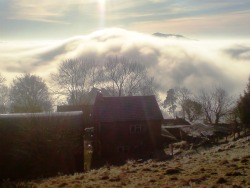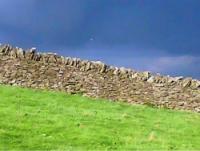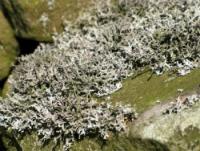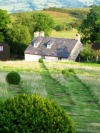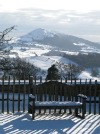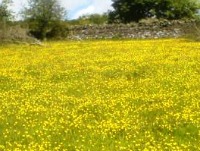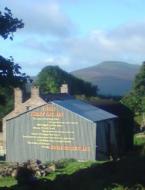Britains Highest Garden
BRITAIN’S HIGHEST GARDEN?
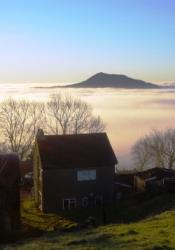 |
How high are we? We prefer to fudge this question, in case anyone happens to be higher. We sit on a ridge reaching to 2,221 feet, on which we’re at about 1,200 feet. In any case, what matters for a properly altitudinous sensation is not absolute height, but relative height. To feel high, the surrounding landscape needs to be lower. |
This is where the Black Mountains score. Because the valleys are low, with big green fields divided by hedges, we become more aware, as the lane winds upwards, of the changing height and view-point. And, more importantly, of all the other things that change with it ... |
CULTIVATE HIGH-MINDEDNESS! RAISE YOUR HiQ!
|
|
The first mountain views are glimpsed through gateways, then the hedges become scrappier and the stone walls begin. Your ears pop. At the gate onto the hill, often we enter cloud. There are few trees up here, and the grass is thinner, nibbled to springy turf by the sheep. There’s bracken with clumps of gorse. Higher still, begin the heather and whinberries. Already we are above the Tornado and Hercules aircraft, and the vast Chinook helicopters, that scream, rumble or beat through the valleys beneath us, practising their contour flying. |
We hear the song of skylarks, so high we sometimes can’t see them, periodically punctuated by the haunting whistle of red kite or buzzard. Further up still, the ‘click’ and ‘clack’ of stonechats gives way to the clockwork mechanical whirr of red grouse. The valley below is forgotten and the view is one of mountains and their ever-changing relationship with the clouds.
|
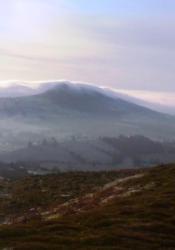
|
The mere fact that it was the one peak that most visitors managed to confidently identify by the end of a weekend, well, what better indicator of character was there than that? It had any amount of myth and legend attached to it. Most important of all, however, was its relationship with the clouds. During temperature inversions, it floated, towering, forbidding and seemingly as vast as the Matterhorn, over a white sea of low-lying mist. Sometimes it trailed a pale plume on its downwind side like the jet stream ‘flag’ off Everest. Other days, when the hills seemed to steam like an Amazonian rain forest, rags of cloud appeared to catch on |
the conifer plantations on its lower slopes, like sheep’s wool on gorse. At other times again the cloud spilt off the summit, like lava from an erupting volcano, or just leant on it, as if the sky were taking a break. Chapter 6, The Not Garden |
SKY GARDENING
Some gardeners in wild places pride themselves on existing despite the wildness, on being an oasis in a desert. Shelter belts are planted, soils and compost imported. Before long, an ordinary garden exists which just happens to be situated in an extraordinary place. To us this misses the point. At Tair-Ffynnon, we’ve tried to celebrate the wildness.
|
|
|
|
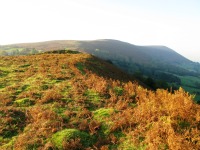
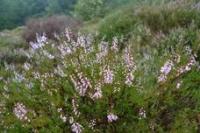
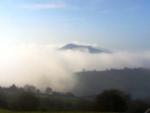
 Skirrid, now I came to examine it properly, had many of the qualities of the greatest peaks in the world.
Skirrid, now I came to examine it properly, had many of the qualities of the greatest peaks in the world.